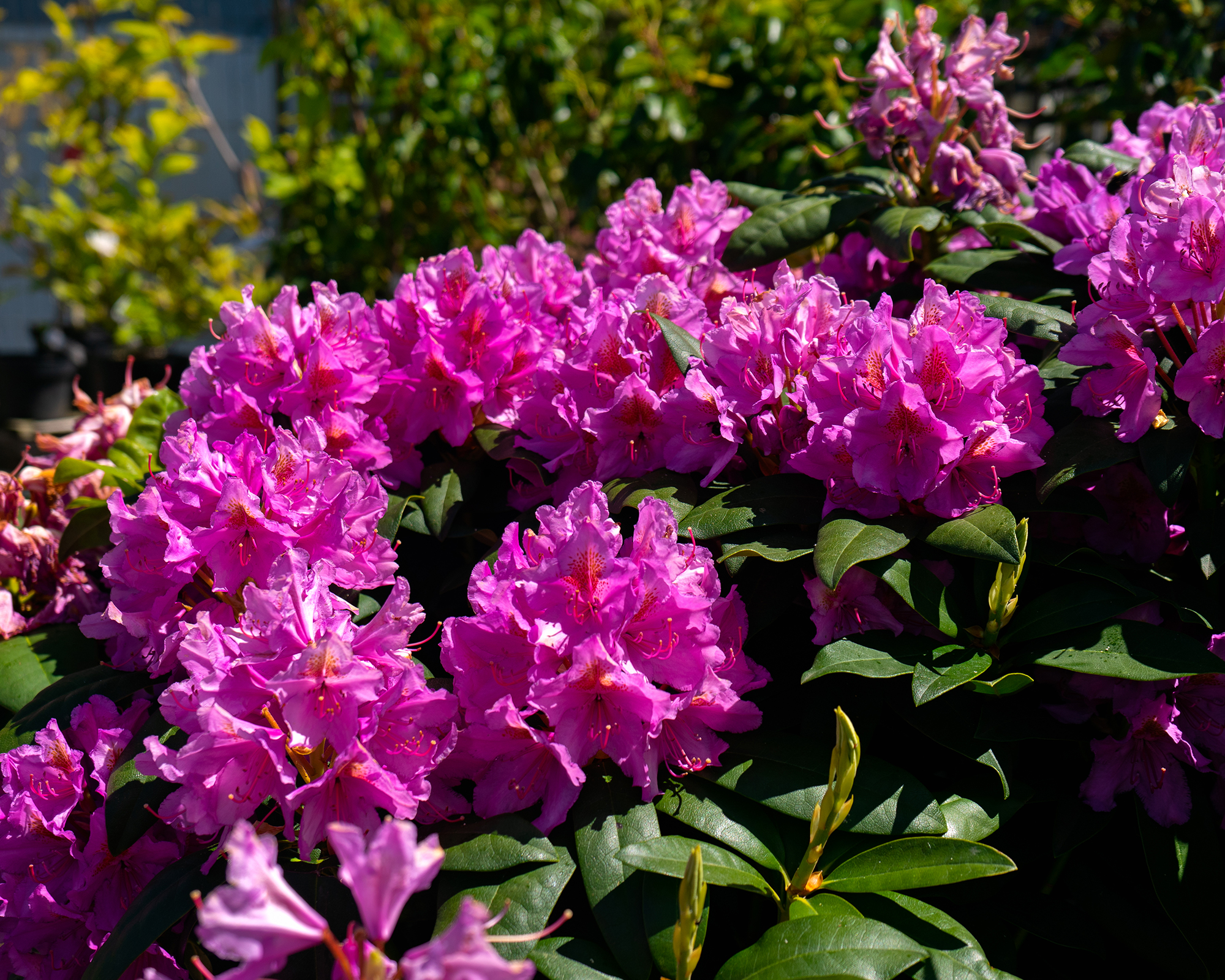How to grow rhododendrons – for wonderful color
Get in the know about how to grow rhododendrons and enjoy the beautiful blooms and wonderful colors of these shrubs


Learn how to grow rhododendrons and you can enjoy fabulous displays of flowers each year. Choose from those with blooms in purple, pink, red, lavender blue, yellow or other hues to bring a spectacle of color to the backyard.
In planning your flower bed ideas bear in mind that rhododendrons are generally larger than azaleas (although they are both from the genus Rhododendron), so always check height and spread – some can grow into very sizeable plants.
One of the best evergreen shrubs, rhododendrons are a versatile as well as beautiful choice for the garden, and this is the lowdown on how to grow rhododendrons.
How to grow rhododendrons
Glossy evergreen leaves and colourful clusters of blooms make rhododendrons one of the best flowering shrubs for many yards. There are so many to choose from, and most varieties are hardy in zones 4 to 8, although you should always check the hardiness rating of the particular rhododendron you’re planning on planting.
Although azaleas are classified in the same genus, we’re concentrating on how to grow rhododendrons here.
Where to grow rhododendrons
‘Rhododendrons prefer to have a more moist climate with a decent amount of rainfall,’ says Jonny Livingston of Gardeners Dream. ‘They do fine with some warmth, but they can’t handle severely hot temperatures. If you live in a warmer climate, you’ll want to make sure the plant is in an area that gets decent shade in the afternoon for them to thrive.’
Rhododendrons also require acidic soil, and regions ‘along the east and west coasts, along the Gulf of Mexico and around the Great Lakes’ offer suitable conditions, according to the American Rhododendron Society (ARS). However, if the right cultivar is selected, there are many regions in which they can be grown.
Design expertise in your inbox – from inspiring decorating ideas and beautiful celebrity homes to practical gardening advice and shopping round-ups.
Where to plant rhododendrons
Select a part of the yard where the plant will receive sufficient shade. ‘Rhododendrons should be planted in a location where they will receive morning sun, but afternoon shade,’ says gardening expert Lindsey Hyland of Urban Organic Yield. Note that if there is not direct light for part of the day, flowering will be inhibited.
Don’t plant in a position that is constantly windy, particularly in a coastal location.
‘Rhododendrons like moisture but do not like wet feet,’ adds Lindsey. ‘Good drainage is important. Amend the planting area with organic matter to improve drainage if necessary.’
As for soil, this should be acidic: the ARS specifies a pH between 4.5 to 6.0. The society warns that if the leaves of the plant turn yellow between green veins, the pH of the soil is likely unsuitable and recommends a soil test so amendments can be added.
Avoid growing rhododendrons near concrete, including in foundations, as this will create alkaline conditions, the society advises.
How to plant rhododendrons
The best times of year to plant rhododendrons vary depending on the region. In colder areas, plant in early spring or early fall. In hotter regions, plant in fall. In a mild climate, they can be planted at almost any time of the year, according to the ARS.
Water plants thoroughly before putting them into the soil. Loosen the roots, too, to stimulate new growth.
Plant rhododendrons so that the top of the root ball is several inches above the surrounding soil level.
If you are putting in more than one shrub, give them adequate space. ‘Depending on size, make sure you give these plants plenty of growing room; consider around at least two feet apart,’ says Jonny Livingston. Always check the eventual size of the plant when assessing.
Mulch around the shrubs but avoid piling it around the trunk and don’t firm it down which could prevent air as well as water reaching the roots. Use mulches such as wood chips, fir bark and pine needles.
How to care for rhododendrons
To keep rhododendrons thriving, pay attention to their needs. Shallow roots mean they can dry out easily in hot weather so water well during these periods, particularly in the first year.
Renew or replenish mulch in spring to conserve moisture and keep weeds down. As when they’re first planted, ensure this is well aerated and don’t firm down or pack it against the plant’s trunk.
If the soil is fertile, fertilization won’t be necessary. However, for soils that aren’t, the ARS recommends a complete fertilizer suitable for acid-loving plants, which should be applied in late winter or early spring.
To get rid of any damaged, diseased or dead branches, shape the shrub, and to rejuvenate it, it’s important to be sure about how to prune rhododendron. This should be carried out after flowering.
It’s a good idea to deadhead rhododendrons that have large flowers. Removing the spent clusters will tidy the shrub as well as preventing its energy going into setting seed. As next year’s buds are just below the flowers, be careful not to damage these.
Dealing with problems when growing rhododendrons
Rhododendrons can suffer from leaf droop when temperatures reach around 32ºF (0ºC). However, the leaves should recover as temperatures become warmer. Leaves can also droop in drought periods. If they are drooping in the early morning rather than on warm afternoons, the ARS says that irrigation is needed.
If a rhododendron isn’t flowering, it may be because cold weather has damaged the buds. Also consider whether pruning was carried out in late summer or fall rather than in spring after flowering has finished.
Do rhododendrons come back every year?
Rhododendrons will come back every year, and typically bloom in spring although some bloom in summer. Even if you need to move one within your yard, transplanting shouldn’t affect the plant because of its shallow fibrous roots.
Always be aware of the eventual height and spread of a rhododendron when you plant it to give it the room it needs to thrive.
Can rhododendron grow in the shade?
Rhododendron can grow in shade, but if one of these shrubs is in deep shade, flowering is likely to be limited. They need enough light for the flower buds to develop.
Always be guided by your climate zone and the cultivar itself as they vary in their needs, and strike a balance. ‘Rhododendrons should be planted where they receive sufficient light so that the plants set flower buds, but not in too sunny a location that leaf damage occurs,’ says the ARS.

Sarah is a freelance journalist and editor. Previously executive editor of Ideal Home, she’s specialized in interiors, property and gardens for over 20 years, and covers interior design, house design, gardens, and cleaning and organizing a home for Homes & Gardens. She’s written for websites, including Houzz, Channel 4’s flagship website, 4Homes, and Future’s T3; national newspapers, including The Guardian; and magazines including Future’s Country Homes & Interiors, Homebuilding & Renovating, Period Living, and Style at Home, as well as House Beautiful, Good Homes, Grand Designs, Homes & Antiques, LandLove and The English Home among others. It’s no big surprise that she likes to put what she writes about into practice, and is a serial house renovator.